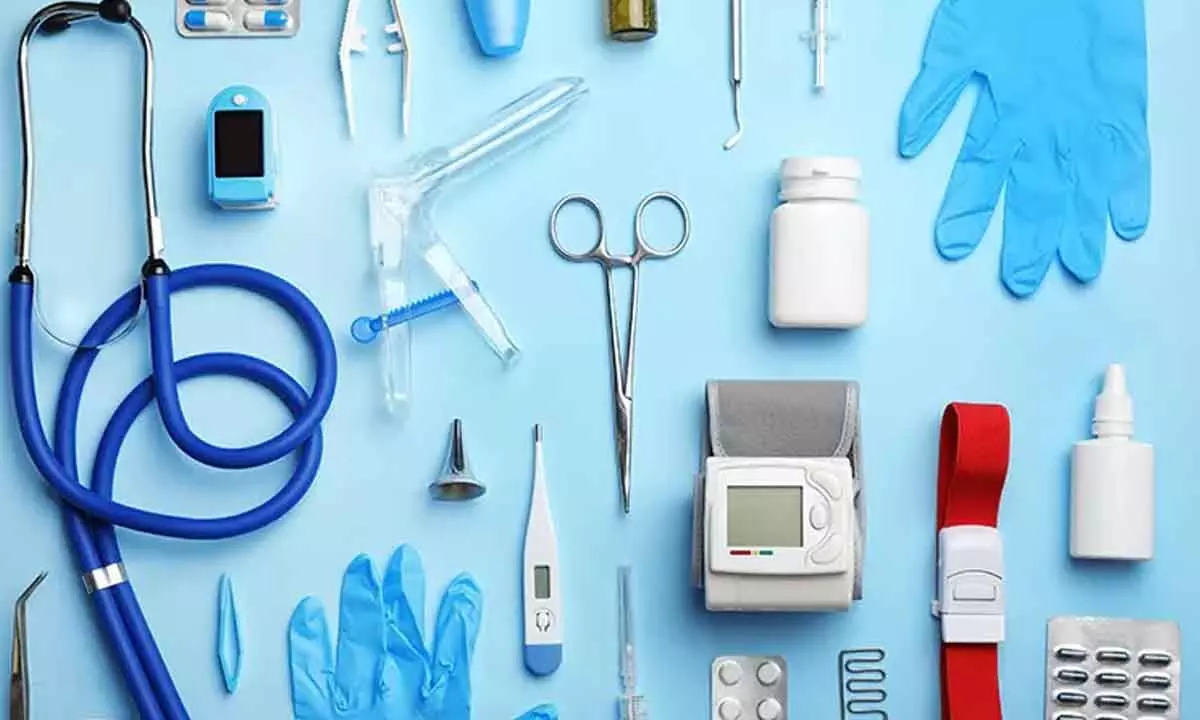Need to bring more essential medical devices under NLEM
At present, only cardiac stents, drug eluting stents, condoms and intrauterine devices are included in the NLEM
image for illustrative purpose

A Parliamentary panel has recently recommended to the Union Health Ministry to identify medical devices which are required for critical care to patients and list them in the National List of Essential Medicines (NLEM) as Scheduled Medical Devices. At present, only cardiac stents, drug eluting stents, condoms and intrauterine devices are included in the NLEM. In its 138th report on 'Medical Devices: Regulation and Control', the Department-Related Parliamentary Standing Committee on Ministry of Health and Family Welfare recommended to the Ministry to identify medical devices which are required for critical care to patients and list them in the NLEM as Scheduled Medical Devices in order to ensure pricing depending upon the cost, availability, need and affordability by the patients.
The panel has also recommended to the Department of Pharmaceuticals (DoP), part of the Union Ministry of Chemicals and Fertilisers, to effectively implement the Trade Margin Rationalisation policy to address the issue of arbitrary pricing by importers. The committee observed that there are only 4 medical devices - Cardiac stents, drug eluting stents, condoms and intrauterine devices - that have been included in the NLEM and their ceiling prices are notified by the national drug pricing regulator, the National Pharmaceutical Pricing Authority (NPPA). The remaining medical devices come under non-scheduled medical devices under the drug price control order
(DPCO), 2013. While the NPPA monitors the MRP of all non-scheduled medical devices and ensures that no manufacturer increases the MRP of any medical device more than 10 percent of MRP during preceding 12 months, allowing a maximum increase of 10 per cent may result in serious jump in prices in a span of few years.
In yet another major recommendation, the Parliamentary panel has recommended to the DoP that instead of the 'same size fits all' approach, the government should create separate baskets for medical devices for pricing depending upon their cost, availability, need and affordability by the patients, just on the lines of the risk-based classification of medical devices. The government had earlier classified the medical devices into four categories based on the intended use, risk associated with the device and other parameters specified in the first schedule of the Medical Devices Rules, 2017. The risk associated with the Class A is perceived to be low, while B has low to moderate risk, C has moderate to high risk and D has the high risk.
The panel further stated that devices which are required for critical care to the patients should ideally be categorised under 'Scheduled Medical Devices and be listed under the NLEM. Additionally, the pricing of medical devices should also take into consideration the cost of the manufacturing and the value the medical device adds to the patient experience and ease it brings to the physician. In this regard, the panel recommended to the DoP to strike a balance between providing affordable healthcare and providing quality healthcare. As mere providing healthcare services without considering how a product can best deliver desired outcomes for a sustainable period goes against the basic policy and principles of the welfare State.
It is a fact that quality comes from innovation and in the medical technology sector, more than completely new inventions, incremental innovations to add features and improve accuracy and efficiency of the existing devices is the norm, so much so that more than 60 per cent of the innovation is incremental innovation. A lot of effort and cost go into R&D, designing, testing, approvals and marketing before innovative products are provided to the needy persons.
So, till the time the desired synergy between government policies, initiatives, academic institutes and Medtech industry is established to create an ecosystem for innovation and R&D in India, so that cost of production of innovative products comes down, the government should continue with steps like price exemptions, value based procurement and subsidy support to the domestic manufacturers. It is sure these measures will result in boost of demand generation as good quality products would be available at affordable prices.
The panel also noted that certain MNCs avoid printing of MRP on each unit of product, so that the buyer (large distributors and hospitals) can list such a price to derive high profits, resulting in unnecessary surge in prices of medical devices. The DoP, in coordination with the Ministry of Finance, must ensure strict adherence to the compliance of the rule which necessarily mandates the printing of MRP on each product. The Parliamentary panel has done its bit. Now, it is up to the government to act on it.
(The author is a freelance journalist with varied experience in different fields)

